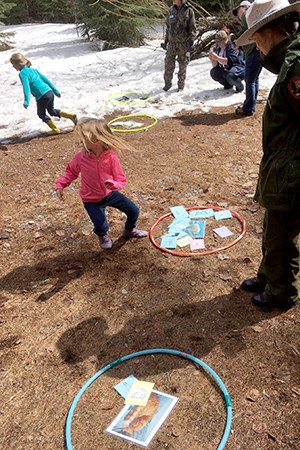
NPS Glacier is a wild place that protects: wild animals, plants, waterways, scenery, and quiet places to sit and observe nature. The animals here depend on this wild place for their home and they have special body parts and behaviors that help them to live here without help from people. Grade: 1st grade
National and State Standards: Next Generation Science Standards ObjectivesStudents will be able to:
Field Trip LogisticsTeachers wishing to have their students participate in the wildlife field trip must have their classes divided into groups of no more than 20 students. For example, a bus of 40 students would be divided into 2 groups of 20 students each. Reserve Your TripVisit the Scheduling & Guidelines page to find the reservation form as well as tips for a successful day in the park. If you have questions, email or call the Apgar Education Center at 406-888-7899. Preparing for Your TripStudents that spend time preparing for their visit get more out of a field trip to the park. Activities post-visit also help to reinforce information learned during the trip. Once registerd, we will email you a complete curriculum guide, including the following lessons:
Suggested supplementary materials:
|
Last updated: May 27, 2020
